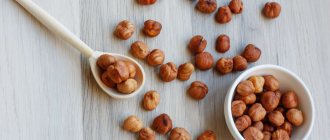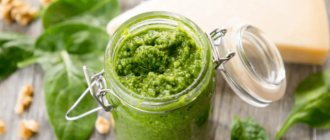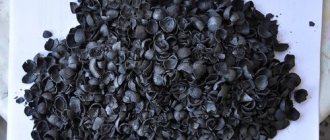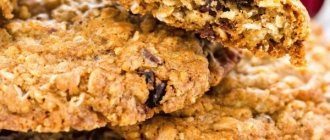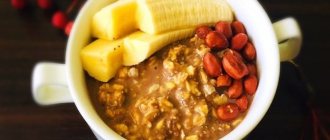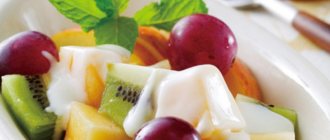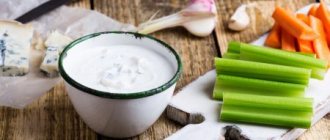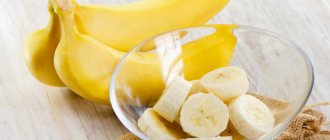Content of vitamins and minerals in 100 g of cashews
For every 100 grams of nut there is a certain amount of vitamin and mineral components. The main ones are presented in the table:
| Vitamins | Amount in milligrams | Daily requirement in % |
| B1 (thiamine) | 0,5 | 33 |
| B2 (riboflavin) | 0,22 | 12 |
| B3 (niacin) | 6,9 | 35 |
| B6 (pyridoxine) | 0,42 | 21 |
| B9 (folic acid) | 0,25 | 6 |
| E (tocopherol) | 5,7 | 57 |
| K (phylloquinone) | 0,34 | 28 |
| Minerals | Amount in milligrams | Daily requirement in % |
| Potassium | 553 | 22 |
| Calcium | 47 | 5 |
| Magnesium | 270 | 68 |
| Phosphorus | 206 | 21 |
| Sodium | 16 | 1 |
| Iron | 3,8 | 27 |
| Silicon | 60 | 200 |
When eating cashews, you should not forget about calories - using the standards recommended by nutritionists will make up for the lack of nutrients and improve the functioning of internal organs and systems.
What is the nut rich in: chemical composition
The calorie content, as well as the content of essential substances in raw and dried nuts are slightly different due to the evaporation of water.
How many calories, what is the nutritional and energy value?
Calorie content and BZHU per 100 grams
Fats 43,8546,35
| Raw product | Dried | |
| Calorie content (kcal) | 553 | 574 |
| Basic substances (g) | ||
| Squirrels | 18,22 | 15,31 |
| Carbohydrates | 26,89 | 29,69 |
| Alimentary fiber | 3,3 | 3 |
| Water | 5,2 | 1,7 |
| Ash | 2,54 | 3,95 |
What is contained in one nut?
Reference
The average size Indian nut kernel weighs from 1.7 to 1.9 g, and the difference in weight between the raw and dried kernel is only 50 mg.
Calorie table and BZHU:
| Raw nucleolus | Dried | |
| Calorie content (kcal) | 9,95 | 10 |
| Main substances (mg) | ||
| Squirrels | 320 | 268 |
| Fats | 789 | 811 |
| Carbohydrates | 484 | 520 |
| Alimentary fiber | 59 | 53 |
| Water | 93 | 30 |
| Ash | 46 | 69 |
What is the glycemic index?
Cashews, both raw and dried, are foods with a low glycemic index of 15-20, which means they can be part of the diet for diabetics.
Number of XE
Since 1 bread unit is equal to 10 g of carbohydrates (excluding fiber), 100 g of raw nuts contain 2.7 XE, and dried nuts - 3 XE.
It is believed that for diabetes mellitus you can consume up to 15 XE, and for obesity - no more than 10 XE. But if in the first case cashews can be consumed in small quantities in the first half of the day, then in the second type nuts are contraindicated.
Vitamins and minerals
The total content of vitamins in acajou practically does not change during drying . The process of water evaporation has a greater effect on water-soluble B vitamins, and the mass of fat-soluble vitamins (E, K) increases slightly due to an increase in the fat content of the product.
| Raw cashew | Dried | |
| Lutein + Zeaxanthin | 22 mcg | 23 mcg |
| B1 (thiamine) | 0.42 mg | 0.2 mg |
| B2 (riboflavin) | 0.06 mg | 0.2 mg |
| B5 (pantothenic acid) | 0.86 mg | 1.22 mg |
| B6 (pyridoxine) | 0.42 mg | 0.26 mg |
| B9 (folate) | 25 mcg | 69 mcg |
| E (alpha tocopherol) | 0.9 mg | 0.92 mg |
| K (phylloquinone) | 34.1 mcg | 34.7 mg |
| Vitamin RR, NE | 1.062 mg | 1.4 mg |
Macro- and microelements
Attention!
The amount of useful minerals in dried nuts also decreases.
The decrease in the content of microelements is especially noticeable:
- zinc by 3%;
- iron by 10%;
- selenium by 40%;
- manganese by 50%.
| Macronutrients (mg) | Raw cashew | Dried |
| Potassium | 660 | 565 |
| Calcium | 37 | 45 |
| Magnesium | 292 | 260 |
| Sodium | 12 | 16 |
| Sulfur | 182,2 | 153,1 |
| Phosphorus | 593 | 490 |
| Microelements | ||
| Iron | 6.68 mg | 6 mg |
| Manganese | 1.66 mg | 0.83 mg |
| Copper | 2.2 mg | 2.2 mg |
| Selenium | 19.9 mcg | 11.7 mcg |
| Zinc | 5.78 mg | 5.6 mg |
Comparing the chemical composition of raw and dried cashews, we can conclude that consuming the former is still more beneficial for the body.
Calorie content of cashew nuts for weight loss
One kernel contains a large number of useful elements and nutrients that will help the body lose extra pounds without harm to health.
Reference!
Do not consume a high-calorie product in large quantities, so as not to achieve the opposite effect.
Cashews have high nutritional value, which helps to quickly saturate the body and reduce the feeling of hunger for a long time. Nuts are also well digestible, which makes them an indispensable product in various dietary dishes.
The unique composition of the kernels helps to normalize the proper functioning of the digestive system, as well as remove accumulated waste and toxins from the body. This helps the body better absorb other foods without translating them into extra pounds.
Due to the high nutritional value of cashew nuts, today nutritionists have even developed an entire nutrition system based on this product. Its meaning lies in the following principles:
- Breakfast: 30 g of whole nuts or 2 tbsp. l. oils from them. You can add celery.
- Lunch and dinner: follow generally accepted rules of proper nutrition.
- Fasting day for cashews: for lunch, eat the norm of nuts allowed by nutritionists, and the rest of the time, if you feel hungry, drink low-fat kefir. Thus, you can lose about 4 kg of excess weight in 1 week.
If it is difficult to follow a strict diet, you can add cashews to various salads, main and main courses, as well as desserts. This will bring maximum benefits to the body.
Reference!
Only a healthy person can adhere to a diet or any other restrictions regarding the consumption of foods. If you have any doubts about the correctness of your diet or the preparation of your daily menu, it is better to consult your doctor.
Nutritional value and calorie content
Cashews, the benefits and harms (for women/men) of which are known to a nutritionist, have a fairly high calorie content. There are 630 kcal per 100 g of raw nuts, and 570 kcal for fried nuts.
Nutritional value per 100 g of cashews:
- proteins – 18 g;
- fat – 42 g;
- carbohydrates – 30 g.
Please note that high fat content does not have a negative effect on your figure; on the contrary, it helps to keep extra pounds under control.
Description
Cashew nuts are native to Brazil, where they grow on an evergreen tree, Cashew occidentalis. It is also called Indian nut and acaju. After the end of the flowering period, large edible fruits of bright orange, yellow or red color are formed in place of the buds. At their very end is the true fruit of the akaju. It is covered with a greenish shell and a dense, rough shell, between which there is a thin layer containing phenolic resin.
The edible kernel is removed only by hand by specially trained people. This complexity is due to the fact that the inner layer is very toxic and can provoke a severe allergic reaction. All traces of toxic substances are completely destroyed during heat treatment. Therefore, cashew nuts are sold only in peeled and fried form.
How do cashews grow?
The historical homeland of cashews is Brazil, but the plant also thrives in India, Vietnam, Iran, Southeast and West Africa, and Azerbaijan. The largest plantations are located in Vietnam - 1/3 of all nuts in the world are harvested here. In general, about three million tons of cashews are produced throughout the year.
The tree on which the nut grows is evergreen. An artificially grown trunk can reach 15 m in height, and in its natural habitat it reaches 30 m. The crown is spreading, flowering occurs 1 to 3 times a year.
When the flowers fade, bright yellow and orange-red fruit ovaries form in their place. They are better known as cashew apples. Their flesh is juicy and aromatic. In Brazil, cashew apples are eaten and they are used to make compotes and juices. After some time, a nut forms at the end of each “pseudofruit”. This is the true fruit of the tree - cashew. The outside of the nuts is covered with a green shell containing a high concentration of poisonous phenolic resins. The edible fruit is located directly below it.
The collected nuts are subjected to processing, which ensures that the taste is preserved. The process takes place in a certain sequence:
- To begin, the seeds are immersed in boiling water for 30 minutes. This helps harden the top shell and makes it easier to remove.
- At the second stage, cashews are placed in special drying ovens at a temperature of 70°C. After this, the inner shell is peeled off.
- The sorting stage is required to separate the nuts by size and weight.
- Glazing or flavoring is an optional step, but quite acceptable for creating a certain type of product.
- Package.
When choosing cashews, pay attention to whole nuts, which last much longer. Never eat dried or moldy kernels. Cashews are poured into a container and tightly closed with a lid. In this form they can be stored for about 3-4 weeks. If you put the container in the refrigerator, the shelf life increases to 6 months. Cashews can be frozen, which preserves their beneficial properties for up to 12 months. It is important to remember that high temperatures cause the release of oil, which gives the nut a bitter taste.
Why aren't cashews sold in shells?
The dense cashew shell is inedible; moreover, it contains toxic substances. Phenolic resin and cardol are aggressive compounds that cause chemical burns. Workers who harvest nuts always use gloves, and before starting work they receive special instructions on how to follow safety rules.
Cashew shells are used for the production of adhesives, emulsions, and rubber, so that all the constituent elements of the nut are consumed with virtually no waste.
[Video] How and where cashews are collected and processed:
Why do they say that raw kernels are poison?
It is not the raw acaju kernel that is poisonous, but the contents of the pericarp. Between the peel and shell of the Indian nut there are caustic substances - anacardic acid and cardol. Oily liquid containing these substances causes severe irritation and burns. To obtain edible kernels, there are 2 processing methods:
- The nuts are manually cracked using special devices. Then the kernels are subjected to heat treatment to remove the acid that has fallen on them, calibrated and packaged. The shell is also processed, obtaining 2 fractions. Solids are used in the automotive industry to make brake pads. Liquid containing toxins - in pharmacology and the chemical industry for the production of phenylamine.
- Toxic substances are disposed of before the nut is cracked. The nuts are first softened in boiling water and then dried in an oven at 125°C. Toxic oils evaporate, making the fragile shell easier to crack. Clean kernels are also sorted and packaged.
Nuts obtained using the 2nd method are considered raw, since it is not the kernels themselves that are heat-treated, but the shells.
Application in cosmetology
To maintain beauty, cashew kernel oil is used, obtained by cold pressing. It is excellent for caring for dry, combination and problem skin [10][11].
Effects of using nut concentrate:
- Accelerates the healing of wounds and microcracks in the skin.
- Dries out acne.
- Smoothes out a network of fine wrinkles.
- Protects the dermis from adverse environmental factors (sun, wind, frost).
- Eliminates peeling, irritation and burns of the skin.
- Improves complexion.
- Stimulates hair growth.
- Reduces fragility of nail plates.
- Increases the elasticity of rough feet, softens corns and calluses [10][11].
Cashew fruit concentrate is used both in pure form and in combination with fatty or essential oils. In addition, massage mixtures, nourishing masks, emollient creams, antifungal agents, anti-inflammatory compounds, rejuvenating emulsions and regenerating balms are created on its basis [10][11].
Recipes
Nourishing hair mask
To prepare the composition you will need: 100 ml of soap base (shampoo, conditioner, balm) and 10 ml of cashew butter. The resulting mixture is applied to a washed (damp) head, lightly massaging the scalp. Leave the mask on your head for no more than 15 minutes. With regular use of the composition, the hydrolipid balance of the skin is normalized and hair follicles are strengthened.
Hand softener
Acaju nutritional extract is used both in pure form and in combination with transport oils (olive, jojoba, peach kernels, wheat germ). To strengthen the nail fold and eliminate peeling, the mixture is applied to damp skin at least 2 times a day.
Relaxing body bath
To eliminate insomnia, nervousness and fatigue, mix 2 drops of geranium, chamomile and lavender ether with 15 ml of cashew oil (refractory). The specified mixture is poured into a warm liquid (38 degrees), after which the water is thoroughly mixed by hand. The duration of the therapeutic bath is 10-15 minutes.
Anti-inflammatory face masks
To “fight” problem skin (acne, flaking, pimples), mix 10 ml of cashew and jojoba oils. Then camphor and eucalyptus ether are added drop by drop to this mixture. A napkin is moistened with the resulting composition and applied to the problematic skin for 15 minutes.
Remember, before the procedure, the dermis should be thoroughly washed with a cleanser.
After-sunburn mixture
Combine 15 ml of nut fat with 2 drops of rose or lavender essential oil. Apply the resulting product to the affected areas of the body four times a day.
In addition, cashew oil is used to treat warts, blisters, psoriasis and eczema (in combination with lavender, lemon balm and tea tree esters)
Fried
Fried cashews have a wonderful taste and aroma, dull the appetite well and make dishes with them more satisfying and nutritious. Although the beneficial properties of roasted nuts are somewhat lower compared to fresh ones, their taste is higher. In terms of calorie content, fried Indian nuts are almost equal to fresh ones - 536 kcal/100 g, per 1 piece. contains approximately 6.86 kcal.
There are two types of frying - dry and with the addition of oil; the second method, naturally, greatly increases the calorie content of the product. If the nuts are roasted for a short time, about 15 minutes, and at a low temperature (120-140°C), the loss of vitamins and other beneficial substances will be minimal.
Fried anacardium can serve as:
- separate snack;
- a side dish for meat or fish;
- ingredient in cereal porridges;
- component of vegetable and fruit salads;
- Whole or crushed roasted nuts are used to decorate cakes.
A popular dessert is cashews coated in sugar and honey or chocolate. To do this, pour the nuts into a cup with liquid honey, mix gently and leave for 12 hours. Then roll in powdered sugar and fry in vegetable oil until the sugar caramelizes and becomes transparent. To prepare nuts in chocolate, you need to fry them, then immerse them in black or milk chocolate melted in a water bath for a few minutes, and then carefully place them on a napkin until the chocolate layer hardens.
Are cashew nuts dangerous?
Due to the correct ratio of proteins, fats and carbohydrates in cashews, cashews are often used in various diets. The main thing is to eat fruits that have undergone heat treatment. In their raw form, they can harm human health.
Also, people who are allergic to the product or have an individual intolerance should not eat the kernels. The latter is extremely rare, but if you notice alarming symptoms, it is better to consult a doctor to avoid the risk of complications.
For all other people, fried cashews are absolutely harmless and safe for health if consumed within the permissible limit, which is no more than 40 grams per day for an adult. If you exceed this amount, an overdose may occur. It manifests itself in the form of a rash on the skin, nausea, vomiting and abnormal bowel movements.
Benefits of cashews for women
Cashew (the benefits and harm for women are contained in its vitamin and mineral complex) is an essential product for human health.
It is able to transform and renew a woman’s body at the cellular level, saturate her blood with oxygen, which contributes to:
- strengthening and improving the condition of curls and nail plates;
- rejuvenation of the skin, acquiring an even tone, smoothing out small wrinkles;
- cleansing the skin of acne, acne;
- relieving emotional stress and depression;
- stabilization of hormonal levels;
- increased sexual desire.
How many nuts can you eat per day?
As mentioned above, during the day nutritionists advise eating no more than a handful of cashews, which is 15-20 nuts.
The approximate weight of 1 cashew nut is 1.5 g.
Accordingly, a daily serving of 15-20 nuts weighs 22.5-30 g. And the calorie content of 30 g of cashews will be 165.9 kcal. The calorie content of one nucleolus is 5.53 kcal.
The data provided will help you calculate the number of calories that can replace unhealthy and fatty foods.
For example, if you make cashew paste and spread it on bread instead of butter (the calorie content of which is 748 kcal), you can not only reduce the number of calories consumed, but also cholesterol and trans fats, often present in low-quality butter.
Benefits during pregnancy
During the period of waiting for a child, a balanced diet rich in vitamin and mineral complex plays an important role, which will not only maintain the health of the expectant mother at normal levels, but also the proper development of the fetus. Cashews cope with this task perfectly if you eat its daily allowance several times a week.
Treatment characteristics:
- The presence of a large amount of iron in the nut in question is considered a good prevention of anemia in both the expectant mother and the child.
- The vitamin-mineral complex in the product will strengthen the immune system, prevent the occurrence of respiratory diseases, and prevent the development of vitamin deficiency.
- The components of the product support the bone tissue of mother and child, strengthening it.
- The presence of fiber normalizes the functioning of the gastrointestinal tract, so the use of cashews prevents the development of constipation.
- The unique composition of the Indian nut has a beneficial effect on the formation of the fetal cardiac system and prevents the development of dystrophy in the child.
During the period of feeding the baby, the product improves the quality of mother's milk, making it fattier and more nutritious.
It is important to know that cashews can cause allergies.
Therefore, if peeling, itching of the skin or other symptoms appear in the mother or child, the product should be excluded from the daily menu.
Cashew nut diet
The nut-kefir diet, which involves giving up other foods for a short time, has gained great popularity in recent years. Cashews are often chosen as the main dish; the calorie content of 100 grams is the reason for this. Kefir should have minimal fat content; the use of plain water is also allowed.
The duration of a strict diet should not be more than five days; it is best to limit it to three. If a three-day program is selected, the consumption of 100 g of nuts per day is indicated, which are divided into 4-5 servings. The amount of kefir and water is not limited.
If a person losing weight chooses a five-day program, the main dish of which is cashews, you must add cucumbers, boiled fish and unsweetened tea to the above products. Portion sizes are minimal; if desired, fish can be replaced with meat, which is also served boiled. It is strictly not recommended to adhere to such a diet for more than five days in order to avoid negative consequences.
Mineral composition
Useful minerals in cashews include:
- Potassium - refers to the main intracellular ions involved in stabilizing water, electrolyte and acid balance. The element is necessary for the regulation of pressure and the processes of nerve impulses.
- Silicon – stimulates the production of collagen, is a structural component of glycosaminoglycans.
- Magnesium – is included in the synthesis of protein and nucleic acid, takes part in energy metabolism, and is used to stabilize the homeostasis of sodium, calcium, and potassium. The lack of a component leads to the formation of heart pathologies and hypertension.
- Phosphorus - used for a variety of physiological processes: energy metabolism, regulation of acid-base balance. Required for the mineralization of bone tissue and teeth, it is part of the structure of nucleic acids, nucleotides, and phospholipids. Lack of the substance provokes anorexia, rickets, and anemia.
- Iron – included in proteins and enzymes of different functions. Takes part in the transport of oxygen and electrons, normalizes redox reactions. An insufficient amount of the element provokes hypochromic anemia, fatigue, myocardiopathy, and atrophic gastritis.
- Cobalt is a structural element of vitamin B12. Responsible for the activity of enzyme metabolism of fatty acids, folic acid metabolism.
- Manganese - necessary in the formation of connective and bone tissues, included in the composition of enzymes involved in the metabolism of carbohydrates, amino acids, catecholamines, used for the production of nucleotides, cholesterol. Deficiency of the substance provokes slow growth, pathologies of the reproductive department, increased fragility of bones, dysfunction of lipid and carbohydrate metabolism.
- Copper - included in enzymes used in the metabolism of iron, accelerating the absorption of carbohydrates, protein, and providing tissues with oxygen. Deficiency conditions provoke disturbances in skeletal growth, the formation of the cardiovascular department, and the formation of connective tissue dysplasia.
- Molybdenum – ensures metabolic processes in amino acids, pyrimidines, purines.
- Selenium, an element of the antioxidant system, has immunomodulatory properties and takes part in the regulation of thyroid hormones. Lack of the element becomes the source of the formation of endemic myocardiopathy, osteoarthritis with deformation of the joints of the upper and lower extremities, the spinal column, and thrombasthenia of hereditary etiology.
- Zinc (zn) - included in three hundred enzymes that take part in the production and breakdown of proteins, carbohydrates, nucleic acids, fats, and regulation of the expression of individual genes. Insufficient consumption of the ingredient causes secondary immunodeficiencies, anemia, liver cirrhosis, sexual dysfunction, and fetal malformations.
An excess of zinc, according to medical research, causes impaired absorption of copper and the formation of anemic conditions. Consuming cashews within reasonable limits helps prevent the development of many diseases, and an unreasonably large amount of cashews disrupts metabolic processes and worsens the general condition of the body.
Vitamins
In addition to proteins, fats and carbohydrates (BJU), cashew nuts contain a large amount of vitamins:
- B1 is a component of enzymes important for the body, involved in energy and carbohydrate metabolism, responsible for providing cells with energy and plastic substances, and amino acid metabolism. A lack of the element can provoke serious disturbances in the functioning of the cardiovascular, digestive and nervous systems.
- B2 – takes part in redox reactions, improves the sensitivity of color by visual analyzers, stabilizes adaptation in the dark. Insufficient supply of the ingredient leads to dermatological problems, disruption of twilight and light vision, and deviations in the condition of the mucous membrane.
- B5 – participates in the metabolism of fats, proteins and carbohydrates, cholesterol metabolism. Accelerates the absorption of sugars and amino acids in the intestines, plays a role in the synthesis of hormones, hemoglobin, and supports the functioning of the adrenal cortex. Lack of the substance becomes a source of diseases of the mucous membrane and skin.
- B6 – is responsible for the stable functioning of the immune system, processes of excitation and inhibition of the central nervous system, metabolism of nucleic acid, lipids, tryptophan. Due to the vitamin, normal levels of homocysteine in the bloodstream and the formation of red blood cells are maintained. A lack of microelement provokes the development of anemic abnormalities, skin problems, and loss of appetite.
- B9 – takes part in the processing of amino acids. A deficiency of a beneficial component causes slow cell division and inhibition of their growth, especially in the bone marrow and intestinal epithelium. If there is a lack of folate during pregnancy, malnutrition, congenital malformations, and prematurity may occur. Insufficient intake of the vitamin in the body contributes to the formation of heart and vascular diseases.
- E – characterized by an antioxidant spectrum of action, used by the body for the normal functioning of the gonads and heart, and is a universal stabilizer of cell membranes. Deficiency of substances leads to neurological pathologies and hemolysis of red blood cells.
- H – takes part in the production of glycogen, lipids, and amino acid metabolism. Vitamin deficiency provokes dermatological pathologies.
- K - responsible for the normal rate of blood clotting. Lack of the element causes poor blood clotting and low levels of prothrombin.
- PP – nicotinic acid is necessary for reduction-oxidation reactions of energy metabolism. Vitamin deficiency leads to gastrointestinal dysfunction, skin pathologies, and diseases of the nervous system.
Beneficial features
Eating cashews helps to significantly reduce cholesterol plaques formed on the walls of blood vessels. The nut has a positive effect on the gastrointestinal tract, rejuvenates the body, enhances brain performance, and strengthens the immune system.
The chemicals that make up cashews help destroy bacteria in the oral cavity that cause caries, tuberculosis, acne, and leprosy. Moderate consumption of nuts can eliminate dental abscess. Eating cashews has been shown to reduce the risk of:
- cancer development;
- heart diseases;
- obesity;
- diabetes mellitus type 2;
- formation of gallstones;
- overeating;
- the occurrence of migraine;
- development of stomatitis, gum problems.
With systematic consumption of nuts, the content of bad cholesterol in the body is significantly reduced. Thanks to this, the walls of blood vessels are strengthened. Supplying the body with healthy fatty acids helps improve memory and positive mood. If you eat a small handful of nuts, you can endure emotional and physical stress much easier.
Eating cashews daily can solve various dermatological problems resulting from metabolic disorders (eczema, psoriasis, seborrhea). The constant presence of the tender nut in the diet allows you to increase seasonal immunity and strengthen resistance to infections of all body systems. The antiseptic effect of the product helps with diseases of the upper respiratory tract.
Dietary properties:
What caloric content do cashew nuts have, what dietary properties do they have? All this is of great interest to those who lead a healthy lifestyle and monitor their health and figure. So we will try to answer these questions in the next article.
So:
Cashews are edible fruits, distinguished by their original shape, in the form of a “comma”.
They began their spread across the planet from South America, namely from hot Brazil. Despite their name, they are not true nuts.
Cashews are loved by many for their delicate taste. Because of their oiliness, they are sometimes considered fatty, but in reality there is less fat in cashews than, for example, in walnuts, peanuts, and almonds.
But they have many useful properties.
Cashews contain a lot of proteins and carbohydrates, and are also a source of vitamins A, B2, B1. Among their mineral composition, iron, zinc, phosphorus, and calcium should be noted. Vitamins are needed for the successful metabolism of proteins and fatty acids in the body, help reduce cholesterol in the blood, strengthen the immune system, and normalize the functioning of the cardiovascular system.
Summary
- The benefits of cashews for all categories of people are undeniable, and a big advantage over other types of nuts is their low tendency to cause allergic reactions.
- The high magnesium content helps eliminate seizures and improve the functioning of the nervous and cardiovascular systems.
- The unique amino acid composition, the presence of omega-3 fatty acids and other characteristics indicate undoubtedly benefits, but do not forget about the other side of the coin: the high calorie content means that you should not consume more than 10 nuts per day.
Contraindications
Maranhaan shells can be harmful to health - they contain cardol and anacardic acid. These substances are toxic and cause severe burns if they come into contact with the skin. That is why cashews are sold only in purified form.
You should not use nuts as an independent medicine in the treatment of serious diseases. You can get rid of them only with the help of properly administered drug therapy. Cashews can be used only as an additional remedy to the main treatment, or for preventive purposes.
Fried
Fried cashews have a wonderful taste and aroma, dull the appetite well and make dishes with them more satisfying and nutritious. Although the beneficial properties of roasted nuts are somewhat lower compared to fresh ones, their taste is higher. In terms of calorie content, fried Indian nuts are almost equal to fresh ones - 536 kcal/100 g, per 1 piece. contains approximately 6.86 kcal.
There are two types of frying - dry and with the addition of oil; the second method, naturally, greatly increases the calorie content of the product. If the nuts are roasted for a short time, about 15 minutes, and at a low temperature (120-140°C), the loss of vitamins and other beneficial substances will be minimal.
Fried anacardium can serve as:
- separate snack;
- a side dish for meat or fish;
- ingredient in cereal porridges;
- component of vegetable and fruit salads;
- Whole or crushed roasted nuts are used to decorate cakes.
A popular dessert is cashews coated in sugar and honey or chocolate. To do this, pour the nuts into a cup with liquid honey, mix gently and leave for 12 hours. Then roll in powdered sugar and fry in vegetable oil until the sugar caramelizes and becomes transparent. To prepare nuts in chocolate, you need to fry them, then immerse them in black or milk chocolate melted in a water bath for a few minutes, and then carefully place them on a napkin until the chocolate layer hardens.
Raw
Fresh cashews do not have a distinct flavor. With a calorie content of 553 kcal/100 g, they are very nutritious, but do not provoke excess weight gain, and therefore are a component of many dietary dishes. In Indian and Asian cuisine, cashews are used to prepare salads, rice, and sauces for meat dishes.
An excellent source of vitamins and microelements can be anacardium nut paste, which has recently become popular in many European countries. You can prepare it yourself by grinding cashews in a blender until it becomes a smooth, oily mass. You can add salt, cinnamon, maple syrup, honey, cocoa, vegetable oil, and ginger to the finished paste.
Raw Indian nuts are used as a remedy for:
- cachexia (exhaustion);
- reduced immunity;
- colds;
- gastrointestinal disorders;
- atherosclerosis;
- high cholesterol levels;
- diabetes mellitus;
- skin diseases of various etiologies.
Helpful information. When purchasing fresh cashews, it is better to choose whole kernels with a smooth, non-wrinkled surface. It is recommended to store them in a closed container, in the refrigerator or even in the freezer, since raw nuts quickly go rancid in warm conditions.
How to use when losing weight
You already know KBJU cashews - it’s time to talk about how to eat nuts correctly if you are focused on dieting and losing excess weight. Want to get the most out of your calories without gaining weight? The following rules apply to you:
- Introduce nuts into your diet in the morning;
- Avoid snacking on kernels before bed;
- Add the product to porridge and muesli;
- Grind cashews into smoothies and cottage cheese.
If you don't count calories while maintaining a normal lifestyle, you can follow these recommendations:
- Make nuts part of your snack, along with fruit and cheese;
- Add kernels to desserts - baked goods and ice cream;
- Use nuts when frying and baking meat.
How to select and store
Criteria for selecting quality nuts:
- kernels are whole, uniform, not wrinkled;
- no signs of spoilage or rot;
- no unpleasant odor;
- undamaged packaging;
- the surface of the nuts is smooth;
- no stains;
- pleasant, sweetish smell.
Failure to comply with these requirements may serve as a reason for refusing to purchase the product.
Storage (months):
- cool place – 1;
- refrigerator – 3;
- freezer – 12.
To store indoors, nuts should be placed in a bag made of natural fabrics (cotton) or a glass jar, in the refrigerator - an airtight container, in the freezer - in a container designed for freezing.
Over time, beneficial substances undergo destruction and lose their benefits, so you should not use a product that has been stored longer than the specified period.
